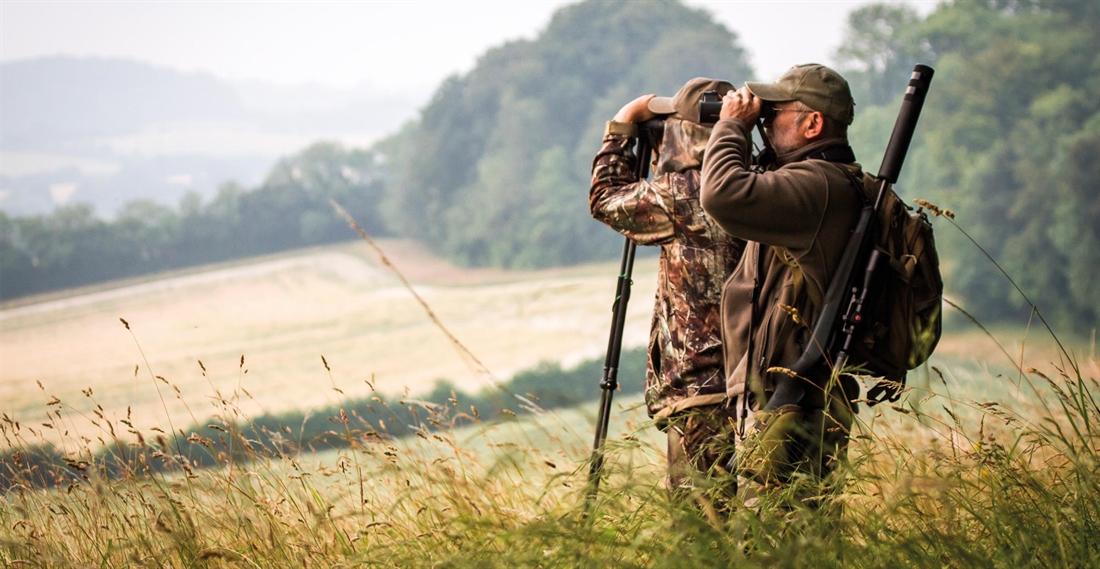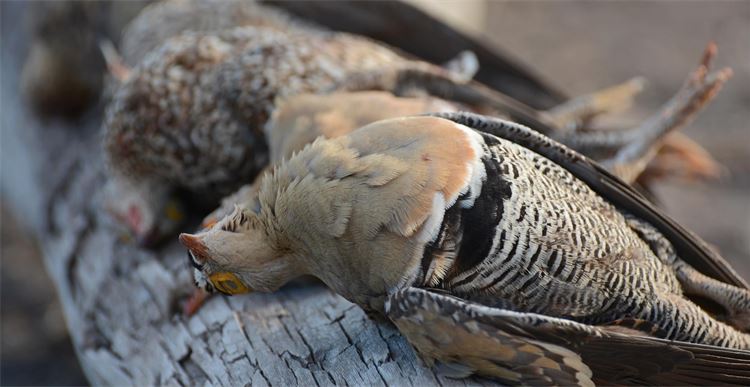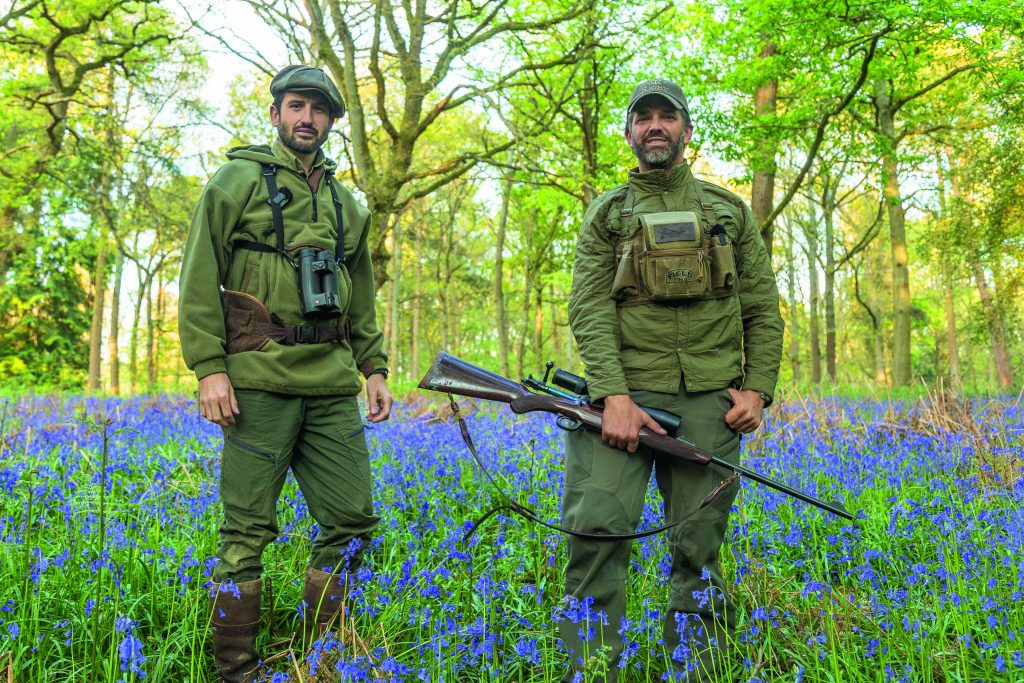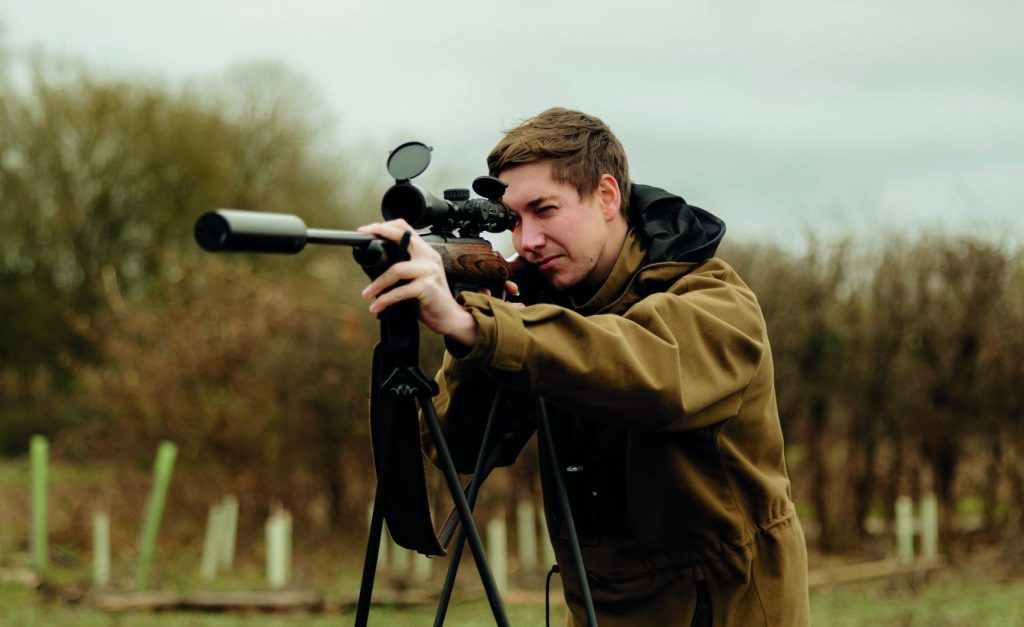Stay my hand
Someone else’s bird, a good animal that deserves to walk, or simply having enough and not needing more... Restraint when hunting – in the broadest sense of the word – is what separates true sportsmen from the rest.

We’re walking after buffalo. Down in the grasslands, up into the lofty sandveld forests, the msasa seed pods bursting like shots as you walk through cathedrals of shadow. It’s winter in Zimbabwe, the grasses dried to tawny gold, the elephant tracks laid in summer’s mud now dried hard in the mopane country.
At first glance the land is hard and baked and thorny. Stand still and the truth will emerge from the shadows. A young bushbuck, delicate and tremulous, ears swivelling and walking as though the ground is hot bricks. A glimpse of brilliant emerald from a pair of parakeets. Crawling through the long grass there’s a tiny quail bursting from cover. It’s all there if you have the patience to look beyond the sunsets and zebras. And so are the buffalo.
The slightest error and they’re gone in a thunderous rush. There are lions here, poachers too sometimes, and they know it. A week in and I’ve stalked buffalo, photographed buffalo, been mock charged by buffalo and can spot dagga boy tracks from a moving truck in my sleep. There have been stalks following old bachelors in the mopane, hours spent wiping sweat flies from my eyes as we lay down another long stalk. Apart from the false charge I haven’t even chambered a round.
One afternoon we follow some fresh spoor. They’re ahead of us somewhere, moving slowly upwind. We hustle as the light starts to go but there is nothing but tracks and dung and the occasional whiff of farmyard. Eventually Zenzo the tracker pauses and a moment later we all hear it. A deep grunt.
We come up to a clear, grassy plain fringed by thornbush and find them spread out. The nearest cows are 50 metres away, the rest strung out over a wide front. Before I’m even started properly there’s a low whistle from Zenzo. There’s a huge bull out there, on the left flank of the herd. He’s got it all – hard boss, good drop, curl that goes on forever. You could hunt this district for a decade and not see a better one.
Then comes the crashing reality. It’s almost dark. Not late afternoon but deep twilight. Zenzo throws the sticks up anyway and looks me square in the eye. I know him of old. He means it.
Sure as fate an old cow on the edge of the herd has picked us up and the other buff start to notice her body language. I put the rifle on the sticks and work the bolt. In the scope are cows and young calves, the wannabe herd bulls and then the big chief himself. He’s at 140, chest on. The rifle is an accurate .375. I can only see his silhouette, once the crosshairs move from grass to his black body they disappear. The boundary of the concession is a kilometre away.
The only thing worse than watching a warrior walk is to lose him wounded. They’re so strong that even if the shot were fine he might be gone, lost to the boundary and the night and the hyenas. It’s simply not good enough. Silently, bitterly, I lift the bolt handle. We worked so damned hard for this. Nobody says a word. I can still see him, clear as day, standing in his field of star grass as the African night swallows him.
All that was a long time ago. He will be gone by now but I hope he put many calves on the ground. That’s all you can do with the great ones really – let them burn into your memory and enjoy them. That and the knowledge that if you play fair, sometimes you will have to stay your hand.
It’s April in New Zealand’s Southern Alps and the red stags are roaring. As the first frosty nights begin you can hear them out in the darkness. Before dawn you begin the burning climb to get above them – and one in particular. He’s spent the whole night bawling his challenges to the sky. Now it’s mid-morning and he’s down below somewhere, still making the occasional moan from a thicket of scrub.
Watch the wind. Carefully edge down over the scree and rocks. Glass often. The breeze is still uphill, but he’s going quiet as the warmth of the day creeps across the valley. Edge into the scrub line on full alert, eyes scanning for movement.
Out of nowhere there is a roar just on the other side of the gully, so close it makes you jump. Overstalked. He’s right there, somewhere in a nightmare of low scrub, no more than 20 metres away. Ease a round into the chamber, safety on, noticing the sweat on your palms, on the bolt. He roars again, finishing with an odd high twist. Maybe he’s exhausted after a long night. Focussing on the source of the sound there is slight movement from the top of a sapling, just a little out of step with the breeze. Contact.
You peer and strain until it’s there, a slight crease in a dappled patch of sunlight. The line of a leg and shoulder for sure. An easy offhand shot. At 20 years of age, hard and bright-eyed, I might have taken it. But I’m not 20 anymore.
Everybody has a tiny whisper in their mind. This is public land. That last roar was rough and unusual. That could be a guy working the same stag, or even roaring himself. What if that shoulder is actually the crease of a hood? And yet it looks so much like a deer that it simply has to be. Then the whisper again – it’s also the perfect match for a hand-sized piece of hunting jacket.
Anticipation and doubt fight it out but it’s time to act. He’s too close to roar at. Try shaking a sapling, he might investigate. The ruse is duly played out but to no avail. Okay, let’s try a whistle. If it’s a hunter he should respond. If it’s a stag he might freeze, hide behind his clump of vines and bush. That should narrow the options right down.
I try a low whistle and for a moment nothing happens. Silence, then crashing. That answers that.
I pick across the tangled gully and there on a game trail is a set of fresh prints, including a smeared slide where the big stag just took off in fright. His sharp scent still hangs in the cold air. I breathe it deep knowing it’s all I’ll ever have of him, but at least there will never be any moments wondering about a widow, a kid with no dad. The never-ending weight of what might have been.
Sandgrouse captured my imagination from an early age. I read about them, looked up their life story in the library. Out walking the savannah on my first trip to Africa I occasionally bumped a pair. All that did, as the liquid wobble of their startled cries faded away, was set the burn a little deeper.
Since then I’ve been lucky enough to chase guineafowl many times. Francolin too, that some call spurfowl for the fighting spurs at their heels. Doves, whose relentless throb from the thickets Karen Blixen once called ‘the sonorous heartbeat of the world’. Today we’ve seen plenty of sandies out on the plains, a big breeding year, and one thing leads to another. Before long I’m stationed under an overhanging tree at a waterhole waiting for my first ever sandgrouse.
There is a time in the African bush when the doves cease their calling in the thorn, a hush gently settles, the dust of the day is washed away. It’s a time to reflect on the surprises, the triumphs, the bitter losses. This was that moment. It started with a faint gurgle across the sand, and suddenly right at the water’s edge, peering from a near-crouch, was a sandgrouse. Another blur shot past and wheeled in close by. Then they began to flood in.
Imagine a clod of dirt streaking across a field of the same dirt. Now imagine that in near-darkness, and imagine trying to hit that in one or two seconds. My friend and I took a couple of birds each and the darker it got the more they came. At their thickest they were landing here, there and everywhere, too many to count, their soft calls clear in the twilight.
And then suddenly we both stopped. There was no signal. Half a dozen or so birds is a meal and that’s all we needed. I’d seen them close now, heard and felt them. Touched their world just for a moment.
We never spoke about why we stopped. We’ve both reached an age where maybe there is no point to prove, and perhaps we’re both getting softer as we get older. Or maybe it is that the more you know of their lives the easier the decision comes to stay your hand. Whatever the case that small handful of birds, 30 years in the making, was enough – more than enough. You may think that strange, and perhaps it is, but it is also right and proper by laws older than any of the game regulations.
All these moments, though set far from each other, share the same message. It’s a simple one. They say that the empty parts of a great painting are also painting, so perhaps putting the gun down sometimes is also part of hunting.
Related Articles
Get the latest news delivered direct to your door
Subscribe to Fieldsports Journal
Elevate your experience in the field with a subscription to Fieldsports Journal, the premium publication for passionate country sports enthusiasts. This bi-monthly journal delivers unparalleled coverage of game shooting, fishing and big game across the UK and beyond.
Each issue offers a stunning collection of in-depth features, expert opinions and world-class photography, all presented in a timeless yet contemporary design.
Save 10% on shop price when you subscribe, with a choice of packages that work for you. Choose from Print & Digital or Digital only with each journal delivered directly to your door or via the app every other month, plus access to past issues with the digital back issue library.









